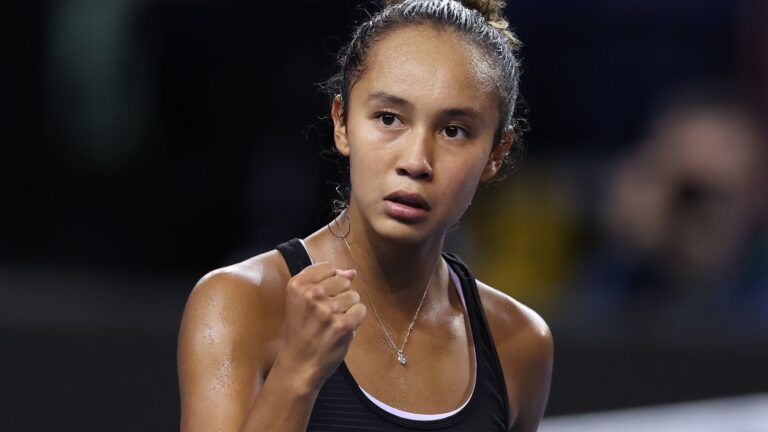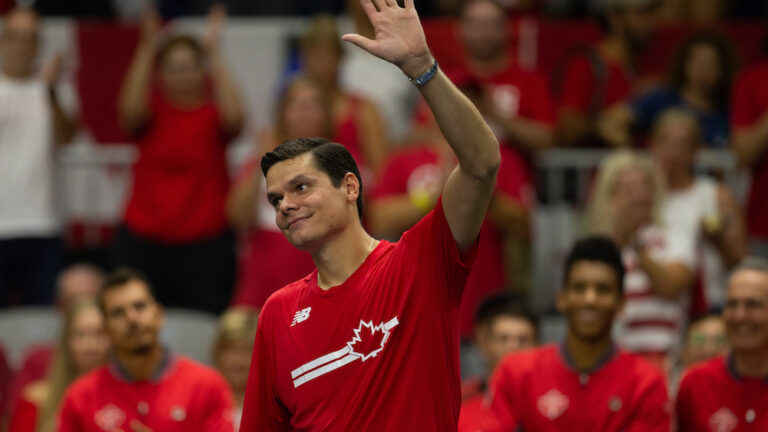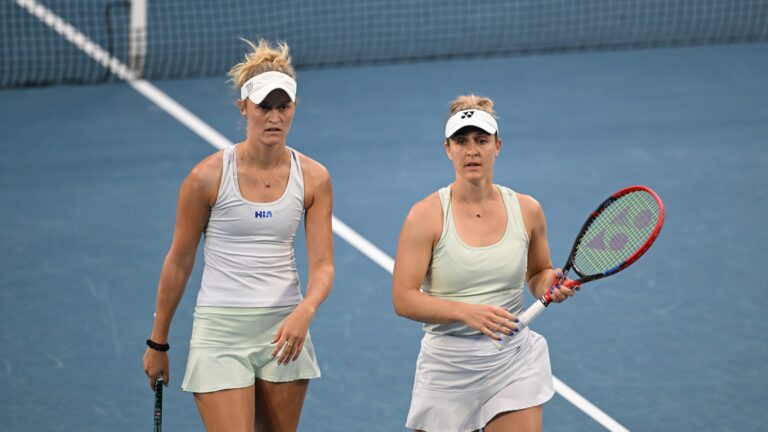Photo : Blog.InsideTracker.com
How do they do it? No, really!
How do they make it through rallies with 20+ shots? I’ve always been fascinated by the concentration and fitness of players who can repeat the same movement endlessly while trying to change the rhythm and destabilize their opponent for 20, 30, 40 or even 80 shots.
Or more than 600 shots. And, in one particular case, more than 51,000.
You read that right: those astronomical figures are really real. Want proof? Read on.
First, a bit about how the topic came about.
On November 29, at the ITF W15 Buenos Aires, No.915 Anastasia Iamachkine of Peru and No.1681 Justina Maria Gonzalez Daniele of Argentina battled for nearly five hours in the fifth longest match in the history of women’s tennis.
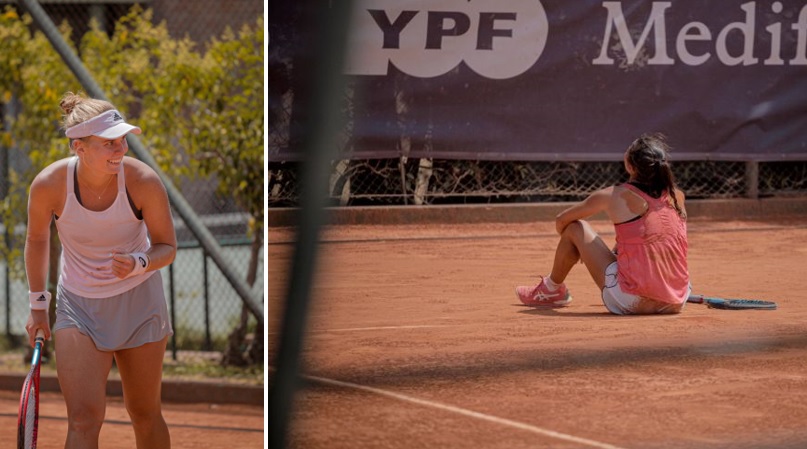
After 4 hours and 50 minutes, at the outcome of three sets and despite hitting grand total of 25 double faults, Iamachkine (left photo) finally got the better of her nemesis (7-5, 6-7(6), 7-6(5)).
Five hours on the court for a best-of-three is a really long time. It’s also a lot of long rallies and games given that there were 45 break points (25 converted).
Oddly enough, just a few months earlier, on August 28, Sandra Samir of Egypt and Tijana Sretenovic of Serbia tussled in the fourth longest match in women’s tennis at another clay court event: the W15 Future in Cairo.
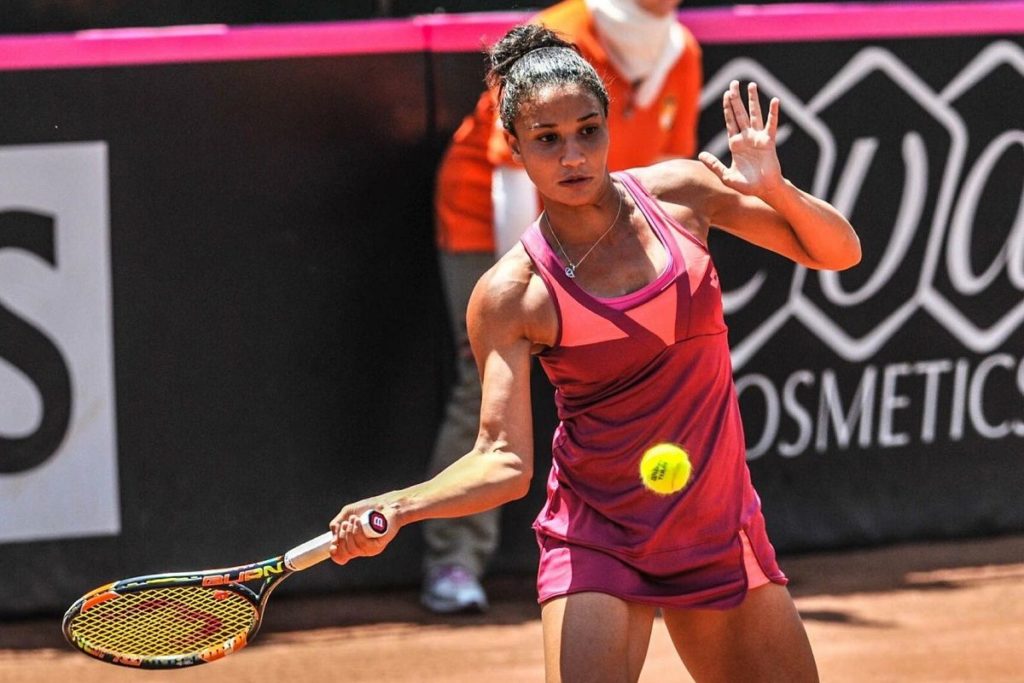
As far as the longest match of all time, you have to rewind nearly 40 years.
In 1984, No.172 Jean Hepner and No.93 Vicki Nelson-Dunbar went head-to-head for close to seven hours in a first-round match in Richmond, Virginia.
Nelson-Dunbar clinched it in two (not even three!): 6-4, 7-6(11).
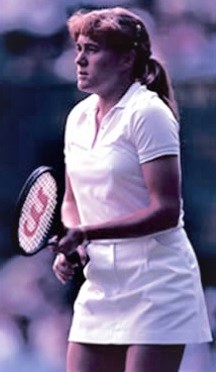
In the second-set tiebreaker, Hepner was ahead 11-10 when she helped establish another record for the longest rally in history—a rally Nelson-Dunbar won before cramping and collapsing after 643 shots.
That’s 643 shots in 29 minutes.
At 11-11, Nelson-Dunbar won the next two points and the nearly two-hour tiebreaker (1:47).
Total time on the court: 6 hours, 31 minutes.
The match was never broadcast, so how are we so sure of the record?
Sports writer John Packett was covering the match for the Richmond Times Dispatch. In an interview with the New York Times, he said: “I started counting because the rallies were so long. I thought: Who knows how long the points will be?”
In 2009, 25 years later, Nelson-Dunbar sat down with NPR to talk about the match. “Most of the points were very long. There could have been some that were longer,” she said.
I saved the best for last.
Impressed by 643 shots? Don’t be. In 2017, a rally between two recreational players went 80 times longer and earned a Guinness World Record.
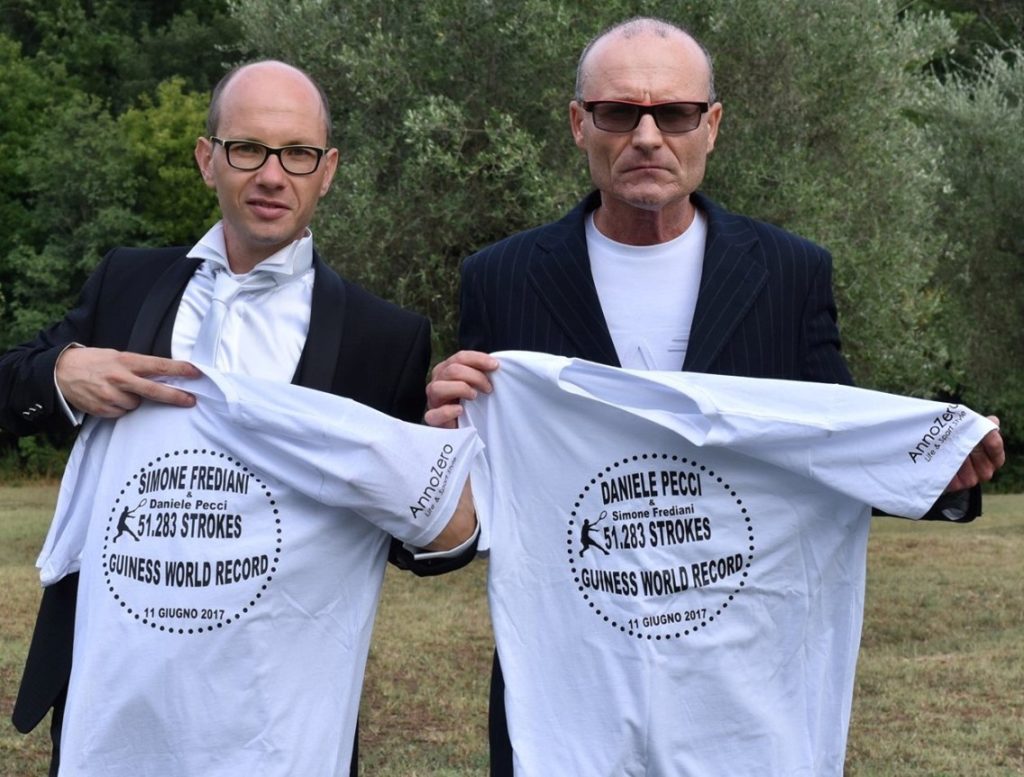
In November 2017, in Grosseto, Italy, Simone Frediani and Daniele Pecci got their match rolling at 6:23 a.m. and kept at it until 7 p.m. That’s 51,283 shots, the longest rally ever. By far.
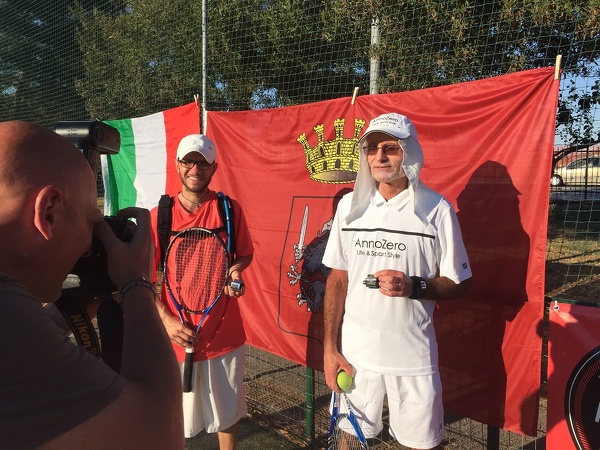
For the 12.5-hour challenge, the two friends wore hydration packs. How did they eliminate all that water? The story doesn’t say.
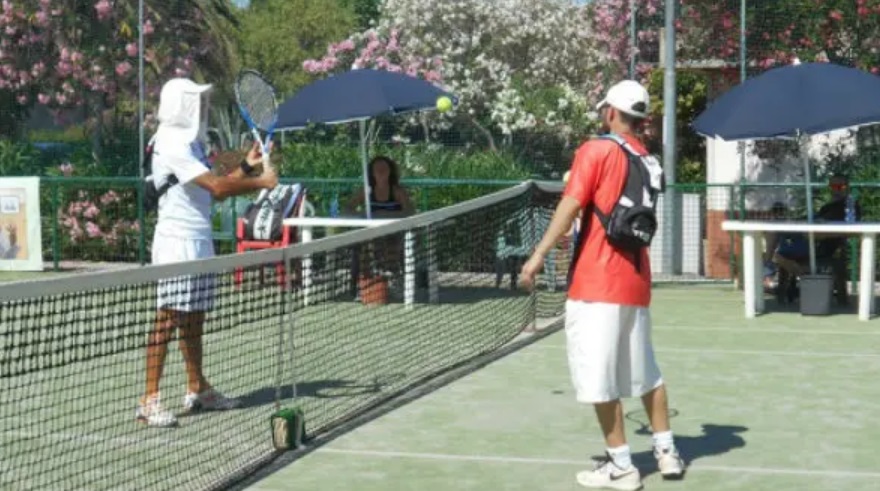
Now that you’ve seen the numbers, I must confess that the Frediani–Pecci showdown was pretty low-key. See the video below and judge the difficulty level of their feat for yourself.
World Tennis League in stealth mode
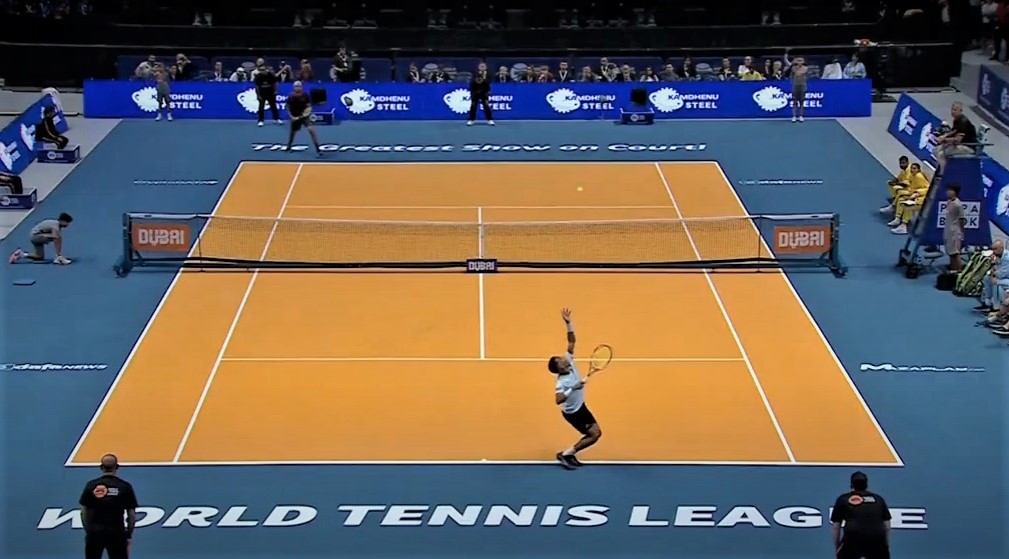
Take a good look at the ball Félix Auger-Aliassime is serving. That’s the only time TV viewers ever saw it.
A yellow orange court and a yellow ball. Not exactly the most contrasting colour combination.
But it’s what the organizers of the new World Tennis League wanted for maximum novelty effect at what they dubbed the greatest show on court.
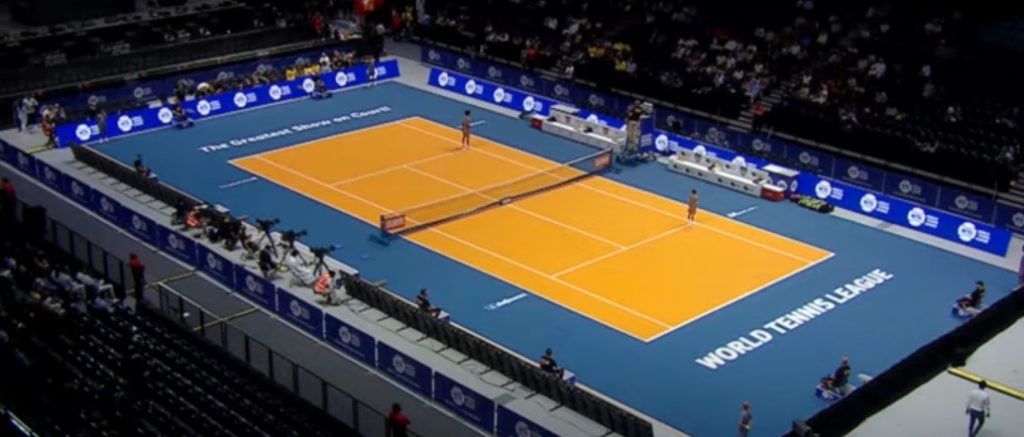
It’s a sales pitch that may attract novices, but still.
Team tennis? Sure!
Teams named after culturally significant birds? A mixed doubles event? A special scoring system? Absolutely.
But why go so far as to pick the most unlikely colour in order to stand out?
Inasmuch as it’s exhibition tennis and most (all) players are there by invitation and paid handsomely, it’s hard to imagine them complaining or questioning the tournament organizers’ choices.
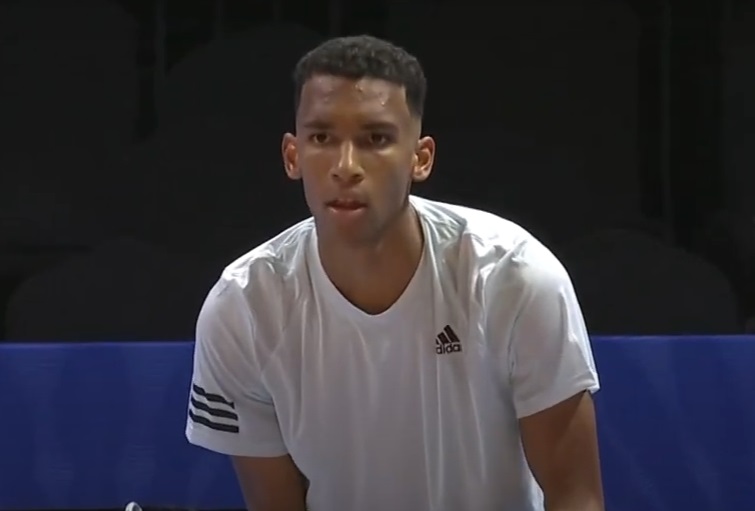
For Auger-Aliassime, the off-season was anything but ordinary.
No sooner had the Davis Cup champagne been sprayed that he jetted off to Togo on a humanitarian initiative. From there, he headed north on an Icelandic getaway with his love Nina Ghaibi.
His next stop was the UAE for World Tennis League in Dubai. And after a quick holiday break with his family in Québec, he landed in Australia to kick off his 2023 season.
If nothing else, World Tennis League was the opportunity for Félix to meet up with Bianca and Eugenie. Here they are on day one of the event on December 19.
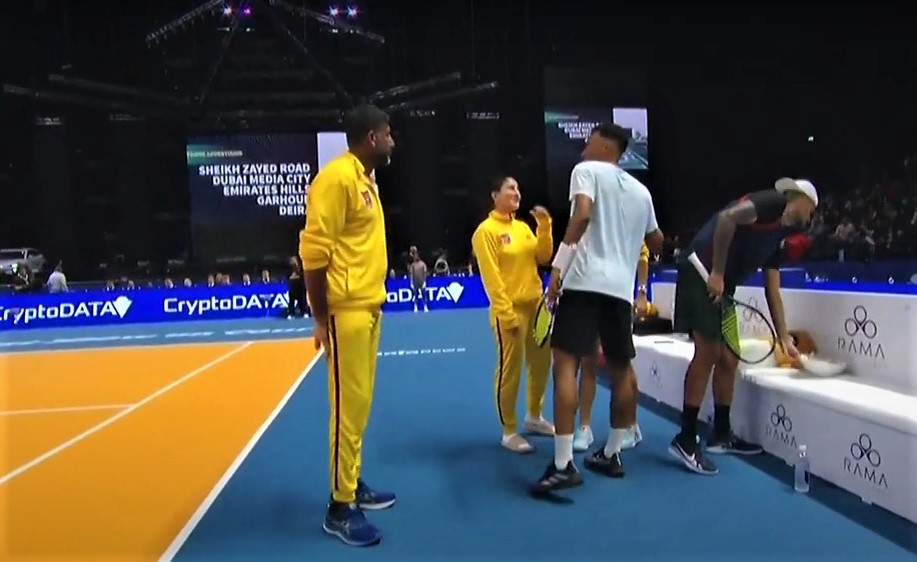
In yellow, which was apparently de rigueur, Bianca and Rohan Bopanna walked over to congratulate Félix on his 7-5, 6-3 win over Nick Kyrgios.
In the next photo: Bouchard–Rune vs. Andreescu–Kyrgios.
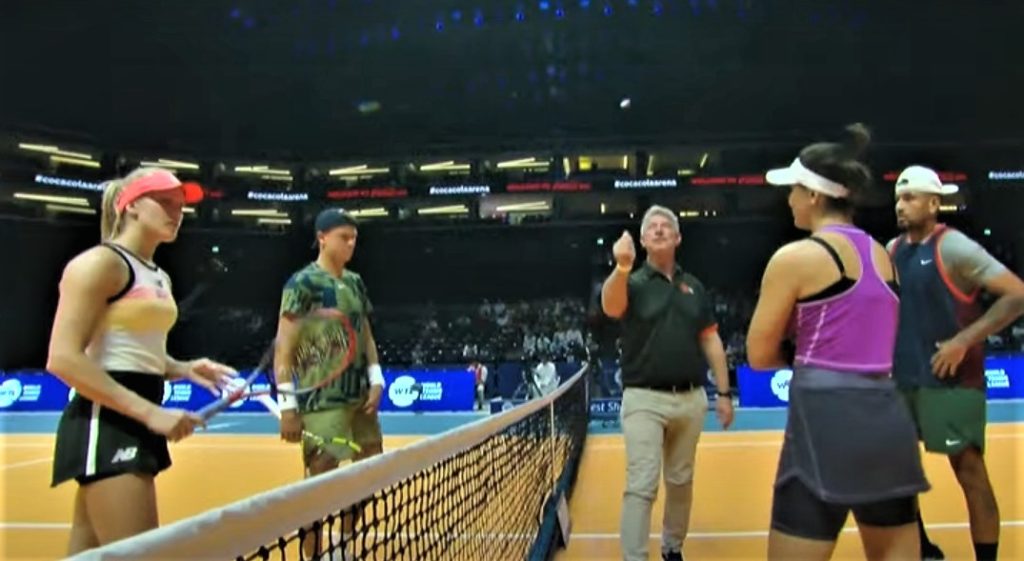
Here’s hoping the citrus-inspired court radiated plenty of vitamin C for their upcoming season.
Separated at birth (8)
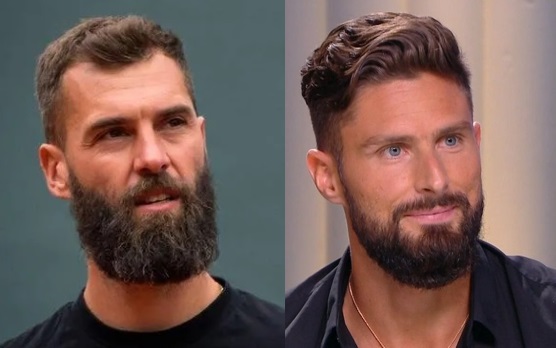
We conclude with the most recent edition of the Separated at birth segment dedicated to the tennis personalities who bear a striking resemblance to other famous people in their sport and beyond.
Back in December, as I watched French striker Olivier Giroud score four for France at the World Cup, I couldn’t help but catch sight of his countryman Benoît Paire.
Giroud’s longer hair counterbalances Paire’s longer beard.
Two elite athletes, two proud Frenchmen.
Email: privard@tenniscanada.com
Twitter: @paul6rivard
Follow all our Canadians in action here.

